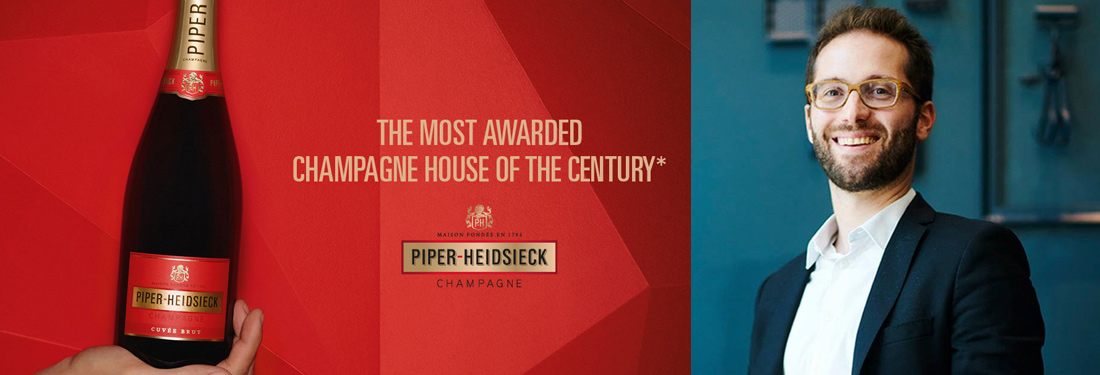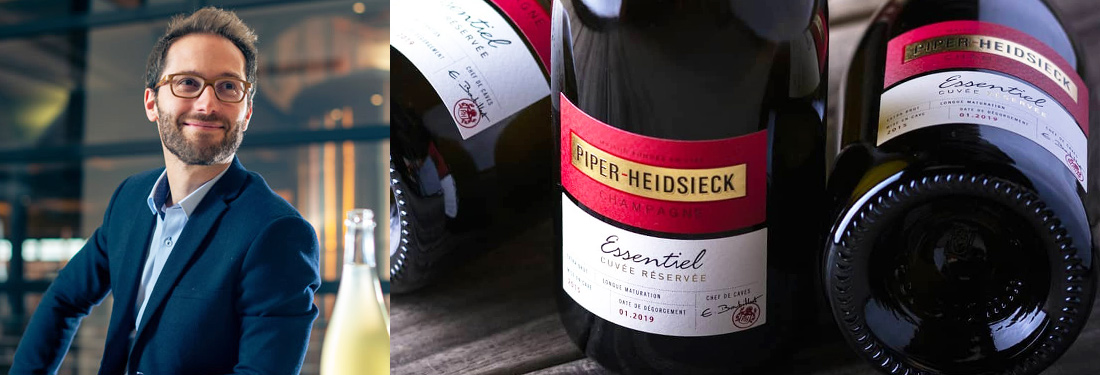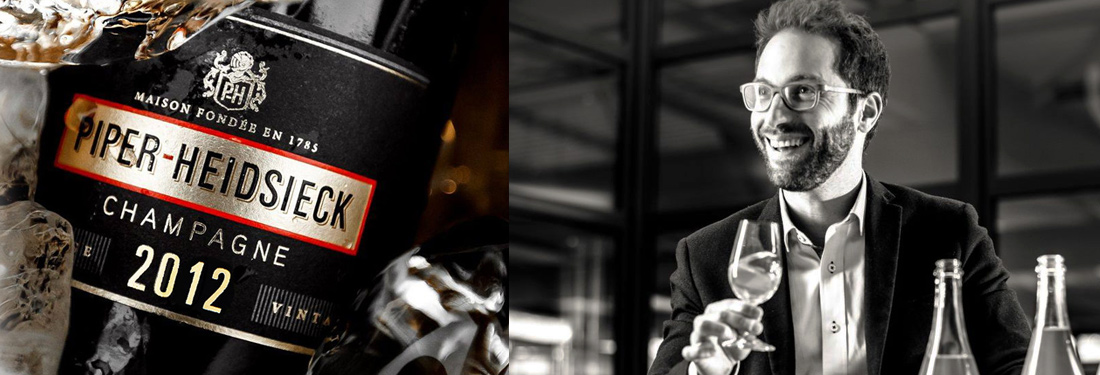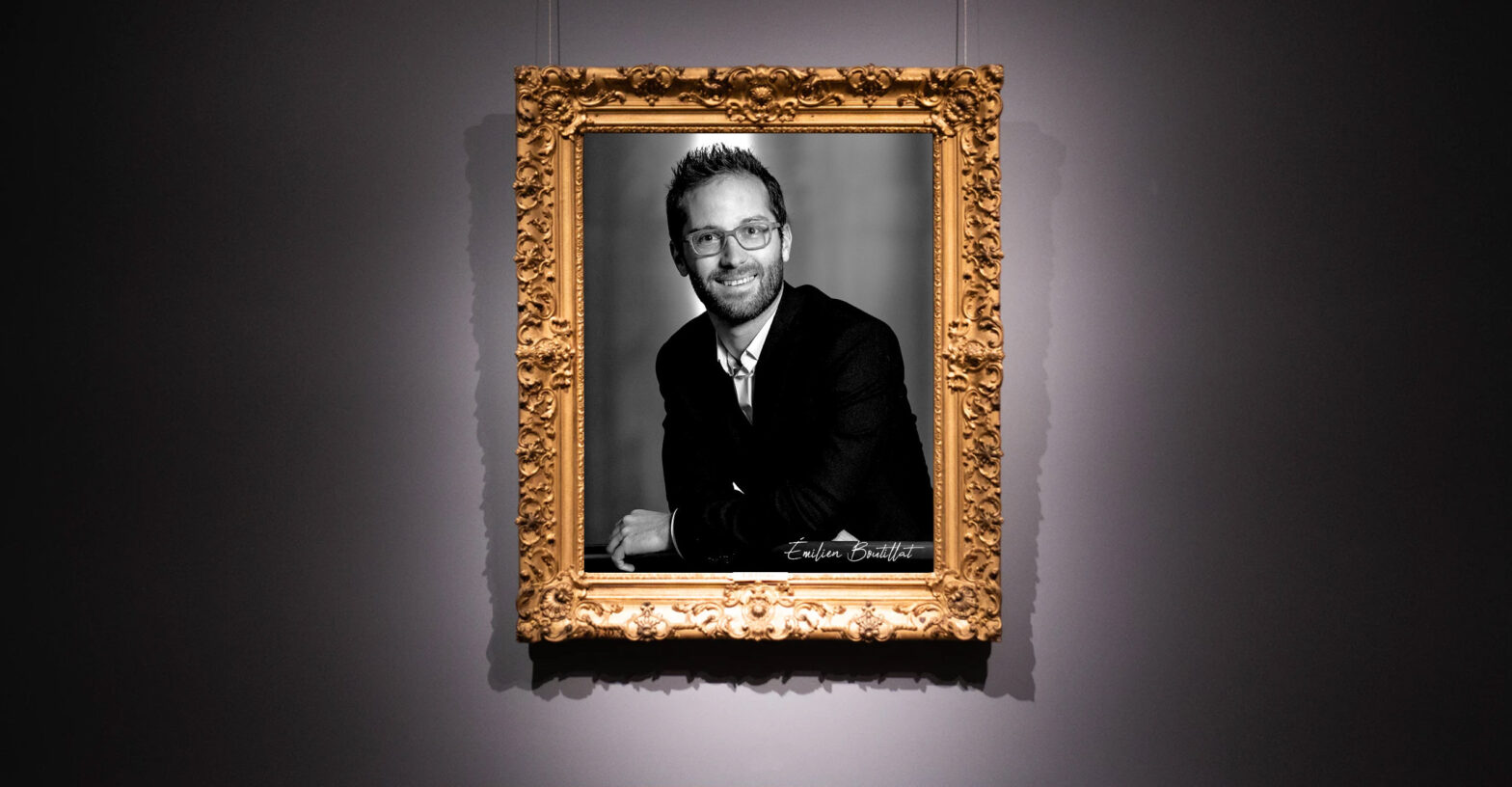Émilien Boutillat - Winemaker Series:
Émilien Boutillat joined the Piper-Heidsieck family in October 2018 being appointed chef de cave, taking over from renowned Régis Camus *(who is working on the ‘Rare’ project). Thanks to the dynamic approach and philosophy of excellence to balance both tradition with distinction. Piper-Heidsieck is the most awarded Champagne House of the century*. And continuing this success, at 34 Émilien has recently been awarded the IWC Sparkling Winemaker of the Year 2021 - presented by the world’s most comprehensive and influential wine competition, the International Wine Challenge in London.
Émilien is one of the youngest winemakers among the prodigious Champagne Houses. Born in Champagne and raised on his father’s Pinot Meunier vineyard, Émilien has a broad experience, being the chef de cave for Champagnes Cattier and Armand de Brignac from 2014 to 2018, along with working vintages at wineries in Chile, New Zealand, South Africa, California, Rhône Valley and Bordeaux.
His exposure to such a wide variety of locations and winemaking practices has allowed his skills and knowhow to flourish and shape him into the open-minded chief winemaker. Speaking several languages, this young and talented ‘cellar master’ has taken advantage of his Champagne roots and international career to develop a dynamic approach to his profession with an inquisitiveness and positivity.
• The following interview covers some background, influences, thoughts, experiences, and a few insights Émilien has gathered during his whirl-wind winemaking journey.

• What attracted you to the wine industry and to be a winemaker ?
"I was born in Champagne and my father is also a winegrower and makes his own champagne. By growing up in that world of winemaking and viticulture - pruning vines, working in the cellar with my father. I developed a strong passion for all aspects of winemaking and inspired by my family and which I developed through my own personal experiences. Working in the wine industry has to be driven by passion".
• When and where did you study winemaking ?
"I am lucky to be born in Champagne, an exceptional wine region, and I am very attached to it. As I have mentioned, grew up working in the industry. That said, I wanted to discover other wines and meet other winemakers with visions similar or opposite to that of Champagne and develop a broader vision of what is possible. So, I chose the School of Agronomy of Montpellier: Montpellier SupAgro, which included both enology and viticulture because you cannot make great wines without great grapes. I became a winemaker, but also an agronomist specialising in viticulture.
For three years, I followed two vintages / harvests a year: one in September in the northern hemisphere and one in February in the southern hemisphere.
• I worked at Châteauneuf-du-Pape (in the Côtes du Rhône) at Domaine de la Solitude making still white wines but also powerful reds, so the opposite of Champagne. Then I wanted to better understand Bordeaux - its enology but also its viticulture, so I joined Château Margaux, where we worked comparing traditional viticulture with organic and biodynamic.
• After these experiences, I wanted to travel further and chose New Zealand, which was my first job abroad. There I joined Mud House Winery, where I learned a lot about how to streamline processes and details to produce quality wine in large volumes, obtaining the quintessence of the grapes.
• Then I moved to California to join Peter Michael Winery, where I found quality requirements close to those of Château Margaux, and where their winemaker is also crafting Méthode Traditionnelle.
• I also wanted to discover Latin America and so I went to Chile. I was winemaker assistant at Viu Manent where I had to manage teams without speaking the language. But with a small dictionary, goodwill, and a lot of listening, we quickly understood each other.
• After this experience, I returned to the south of France to join Vignobles Foncalieu, a co-operative in the heart of Languedoc, before leaving for the last time abroad: in South Africa at La Motte Wine Estate.
• Additional to my studies, my experiences abroad taught me a lot in terms of openness. For example, I was pleasantly surprised by the balance of Cap Classique wines (produced in South Africa with the Champagne Method). It is a very hot region where I tasted some superb wines of an unexpected freshness for this climate".
• Which person has influenced you the most as a winemaker and why ?
"I would say first my father as I grew up with him and had the chance to follow him in his winemaking approach daily. Also, Nicolas Morlet, winemaker at Peter Michael winery in California helped me a lot to develop and sharpen my tasting skills. On top of his oenologist diploma, he had a ‘nose’ diploma which brought an even larger descriptive palette for aromas".

• With each new vintage what do you most look forward too ?
"Each year is different, especially today with the climate change, we need to be able to reinvent and to adapt ourselves to the new climate condition, to the new story that is writing every year.
The first grape tasting is always a very special moment to my eyes, as well as the first tasting of the year’s clear wines.
We need to stay humble, because we will truly know if we have done well only years later from now, after ageing. Being chief winemaker is a job that requires a lot of patience".
• To date what has been you most interesting / challenging / rewarding vintage and why ?
"Since I arrived at the House of Piper-Heidsieck. I had the chance to begin with an exceptional vintage trilogy 2018-2019-2020. I hope that will last for a while and we will be able to continue producing rewarded vintages and cuvées for the next 10 years. Only time will tell".
• If you could make wine anywhere else in the world - where would it be and why ?
"It’s very hard to give you a precise region, there is so many exceptional wines and landscapes worldwide! I think it will depend on the wines I would be eager to produce. I have an affection for Chilean wines especially regarding the viticulture side. There is no phylloxera there, so the vines are ‘francs de pieds’.
Also I really like Pinot Noir in red wine, so if I had to work somewhere else, it would probably be in Bourgogne, or maybe in Central Otago. I found the quality of the Pinot Noir amazing there. And I also really like hiking, so living close to Wanaka and Queenstown is a good point".
• For your next birthday - if you could open and enjoy any bottle of wine in the world ever-made, what would it be and why ?
"If I could travel back in time, I would like to taste the first wines made by my family back in 1765. When the family vineyards were established in the village where I grew up. Pure curiosity, it is a way to come back to my roots as well".
• What advice would you give a young person starting out as a winemaker ?
"To travel and learn from every part of the world and build your own point of view and philosophy. Believing in your convictions is also very important".

• When you are ‘not’ making wine - what is one of your favourite things to do to relax ?
"I have a passion for improv theatre - it allows me to nurture my creativity and to share strong moments on stage with my friends. I am also keen of outdoor spaces; I really like gardening and trekking".
• In the near future is there a grape variety you can see playing a more important role in the making / blending of Champagne and why ?
:All the blending components are essential to preserve the balance of a great Champagne. Years, terroirs and grapes plays a major role. With climate change, I will keep an eye particularly on the Meunier for the coming decades. Meunier really offers interesting characteristics: maturity, the fact that it brings gourmandise while keeping a certain freshness. Maybe I am not completely objective as I grew up in a terroir composed of 95% of Meunier".
• In the near future, what exciting ‘challenges’ or ‘changes’ can you see in the vineyards of Champagne ?
"Climate Change is one of the biggest changes that is affecting our vineyards and our day-to-day approach of winemaking. We need to have different actions to put in place to ensure the same quality of Champagne.
First; we have to adapt to climate change because it is already here, we have several levers to use:
• The choice of the harvest date is crucial so that we can have mature grapes, but not too much regarding the climate we are facing. For example, last year we had an early harvest- around the end of August - whereas this year, harvests should happen around mid-September because of cool climate during spring time.
• With my winemaking team, we take the decision, the choice to carry out malolactic fermentation or not wine by wine. By having this adaptability, it allows us to preserve the freshness of the wines if necessary, regarding the climate of the year on specific terroirs.
• The choice of terroirs in our blend is also a lever to keep the same Piper-Heidsieck quality, with the climate getting hotter, cooler terroirs such Tauxières, Cormicy (North of Champagne) are given more and more importance in our blends.
Second; our responsibility as a Champagne House is to put in place all the actions necessary to reduce climate change at our scale.
The sustainable viticulture is key for us through all the actions we have already put in place in our vineyards. We have total control of our Piper-Heidsieck’s vineyards where we give a lot of importance to biodiversity without the use of insecticide nor herbicide. All our vineyard is mechanically weeded, and we have reduced the use of fungicides. We replant native trees to bring back insects and biodiversity to create a new ecosystem in the vineyard that will benefit the vines and the grapes.
I believe that protection of our environment will also depend on technological innovations. That is a real challenge. That is why Piper-Heidsieck decided to invest, along with our Côte des Bars partner, in the Champagne start-up VITIBOT which designed and developed the Bakus robot. It enables us to handle the diligent maintenance of the soil we need: from mechanically weeding under the vines to cutting the grass between the rows".

• Using an imaginary crystal-ball: If you could look back in 30 years *(say 2050) on your influence on the cuvée’s you had made - what would you like history to say about the Piper-Heidsieck ?
"As I said, in Champagne, patience is key, when you arrive, you get the legacy of your predecessors, and I want to leave a preserved Champagne as a heritage. Preserving those terroirs for the upcoming generations so that they can also blend exceptional champagne.
The quality of Piper-Heidsieck Champagne has not stopped increasing for the past 20 years, and I wish this improvement will continue for the next 30 years. I would like history to say that Piper-Heidsieck kept its pioneering spirit by keeping improving daily its sustainable practices in all aspects of viticulture and winemaking, while crafting the finest wines. Thinking out of the box, staying with a progress approach. There is no little step and we all have our role to play".
• In 12 words or less - express the essence, personality, and character of Piper-Heidsieck.
I define the style of Piper-Heidsieck as:
For me, the ideal style is the balance between generous fruits and a certain elegance and minerality.
Where can you find Piper-Heidsieck Champagne:
Piper-Heidsieck Champagne 'dynamic wines with refined distinction' are available in New Zealand and around the globe from quality wine retailers, restaurants and wine bars. Or visit the Piper-Heidsieck website - CLICK HERE
